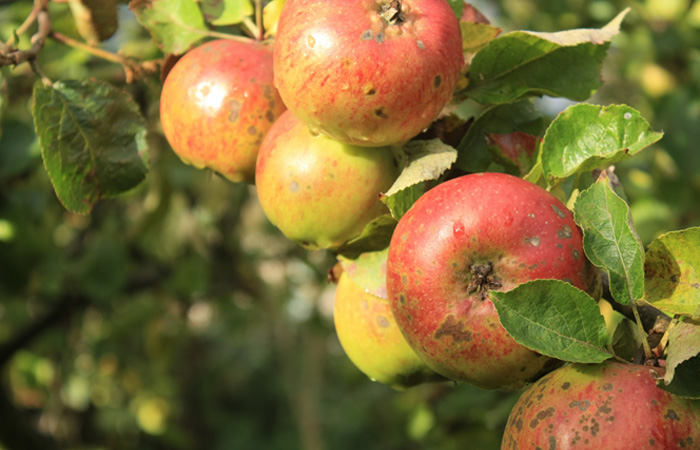Last year, we decided to buy only local food. It was an experiment to see whether it was actually feasible to “eat local” for a whole year, and it yielded some interesting results. Let me walk you through our reasons for taking on this challenge.
Food is a huge part of our economy, especially in the traditionally agricultural region of southern Manitoba. Today, the pressure of big-box retail and large-scale agriculture means that fewer and fewer citizens have the option of taking over their parents’ farm, or striking out on their own to start a new farm. When we looked at our food budget, we saw that it was a silent but powerful vote against our neighbours’ success. Our fridge and pantry said it all – condiments from the U.S., vegetables from Mexico, fruit from South America, and shelves full of processed foods from around the world. Very few of our daily foods were local. The second reason we chose this challenge was the feeling that we’d forgotten (or never knew) how to eat what was available to us here and now. Hadn’t our ancestors always eaten by the seasons? Aren’t our most prized foods the result of creatively working with what was available? We wanted to find out what we were missing by always taking the easy route. Lastly, there was something missing from our shopping trips to the supermarket. Despite the endless variety of commercial foods, we saw nothing that reflected our values. Mass-produced and over-packaged, the basic nourishment of simple food was distorted and lost. Every week, some new delight had been formulated in a laboratory and packaged to appeal to our impulses. What were we really spending our money on – and where was it going? All too often, the answer was unsatisfying.
So, we laid some ground rules. If we were to stick to this, they needed to be reasonable: All the food we bought had to be from Manitoba (or just over the border in Saskatchewan or Northern Ontario). Not all the ingredients of prepared food had to be local – just the company that produced it. Coffee and tea were not allowed, but spices were exempt from a local requirement. Also exempted were visits to restaurants, or gifts of food that we received from other people (nuts, chocolate, etc). Allowing these exceptions gave foreign food the specialness that it deserved.
Here’s what we discovered. First, a change like this shouldn’t start on January 1st as we did, for the simple reason that we hadn’t prepared for winter with this in mind. Although we had a lot of canned food from our garden, we certainly would have prepared more.
Second, we made a good decision to continue using the “exotic” foods in our pantry just as we always did – no rationing. Things like olive oil and crackers eventually ran out, challenging us to find alternatives. Some things had no alternative, and that was OK. A side benefit to this purge was slowly using up some of the long-stored goods that had cluttered the pantry. Some things, like sugar, were very difficult to replace. But honey served as a good substitute, with some recipe adaptation – as did lard, for oil. In fact, lard quickly became a daily ingredient due to its affordability and ideal qualities as a cooking oil. Substituting lard for butter in recipes allowed us to keep costs down – a strategy that worked very well in all but a few desserts. Sometimes you just need butter. Other common purchases were: Cheese from the New Bothwell factory store / Prairie Flour Mills flour; Pioneer lard from Sobey’s / Manitoba arctic char; God’s Acres vegetables; Tri-Pop meats from Good ‘n Natural / Old Church Bakery bread; Greenland Gardens tomatoes from Main B&B / eggs; butter; pasta; Stoney Brook Creamery milk from Nature’s Farm Food Shed, and bulk dry beans and grains from Top of the Hill Farm (now also Adagio Acres CSA). Importantly, we also bought honey and garden vegetables from some producer friends of ours.
Any cost-conscious person might find that list intimidating. But our average grocery cost for two people and a baby was about $250/month, made possible by the simple practice of home economics. We found that gardening, buying bulk, and working with what you have and wasting nothing will get you a long way. Specifically, we benefited from canning & freezing fruit/vegetables that people give away in peak season. We ate much less meat and much more dry beans (we also pressure-canned them for quick use). We make stock from all our bones and vegetable ends, and my wife makes “blender mayonnaise” which works surprisingly well. As we became more aware of our eating habits, we even began to eat healthier by reducing our portion sizes (a bit).
Our experiment with eating local was a challenge, but it succeeded in changing the way we shop. We’ve decided to continue eating local, with some minor exceptions for “treats”. I would encourage you to try something similar if you don’t see your values reflected in the food you buy. Just make sure to choose a goal that will challenge you without being unattainable. I’m sure you’ll learn something you didn’t expect.
Consider these recipe books: More with Less, Simply in Season, Joy of Cooking and Nourishing Traditions.




